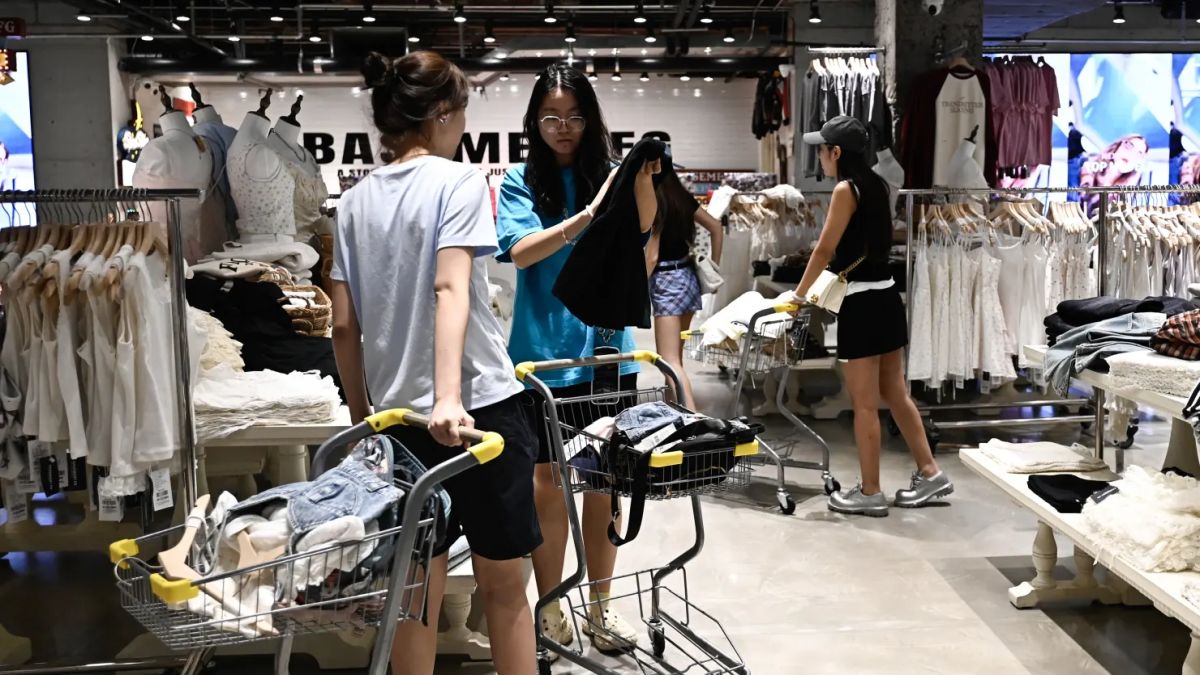When Ozempic and similar GLP-1 drugs hit the market, we started noticing a rapid shrinking of people’s sizes. The drugs have exploded on to the scene, especially in the US and Europe, with some reports even stating that one in eight Americans have tried Ozempic or another GLP-1 inhibitor like Wegovy.
Surprisingly, the boom of these drugs have seen a ripple effect in the fashion world, with the resale market in the US seeing a drastic transformation.
What are we talking about? How is Ozempic and its many versions changing people’s closets and their buying behaviour? Here is what we found out.
Shaking up resale market
With the increased use of Ozempic in the US — more people are using the drug for weight-loss purposes — it is no surprise that people’s bodies are changing drastically. And this drastic change has spurred a spike in sales in the second-hand luxury industry.
A Fortune report states that high-end resale has already grown twice as fast as the primary luxury market. Inflation-struck consumers with expensive tastes and bodies changing, thanks to Ozempic are looking for affordable alternatives to their favourite brands. This has led the luxury resale market reach $49 billion in 2023, as per management consultancy Bain & Company, who predict that it will grow one-four per cent this year.
Size matters
Thanks to Ozempic and other weight-loss drugs, several people are taking to selling their wardrobes on resale platforms, with some of them noticing that a lot of the stock coming in is in the plus-size category.
For instance, Poshmark, a second-hand marketplace based in San Francisco, has seen a significant surge in plus-size women’s apparel listings on the platform over the past two years, including a 103 per cent increase in size 3XL listings, 80 per cent in size 4XL, and a 73 per cent rise in size 5XL. The company has also reported a 78 per cent increase in new listings mentioning “weight loss” in the title or description as sellers look to get rid of items that no longer fit.
Vogue Business also reported that Vestiaire Collective, the Paris-based company facilitating the sale of premium second-hand goods online, has also seen a similar trend online. “Anecdotally, we have had some sellers tell us that they were selling because their sizes have changed,” a spokesperson for the brand told Vogue Business.
Similarly, Jim Davis, chief revenue officer of Goodwillfinds, the online thrift store selling donated items from Goodwill shops across the US, has also seen a similar pattern with people donating clothes after significant weight loss attributed to medications like Ozempic.
Interestingly, back in June, some clothing brands had reported that their customers are buying new clothing items that are multiple sizes down, which they suspect was likely due to customers dropping weight after taking Ozempic or similar GLP-1 weight loss drugs. The CEO of American fashion brand, Lafayette 148, told the Wall Street Journal that five per cent of their customers are buying new clothes because of weight loss.
Similarly, Rent the Runway CEO Jennifer Hyman told the outlet that more customers are switching to smaller sizes than ever before in the company’s 15 year history. They, however, had clarified that couldn’t say for certain that weight loss drugs are the direct cause of these new trends.
Also read: ‘Ozempic babies’ are on the rise: Are these weight-loss drugs boosting fertility?A plus-sized problem
However, the reshaping of the clothing industry may present a problem for some retailers and resale platforms. If the influx of items on such platforms is a larger size and the overall demand is moving towards a smaller size, there may not be a market for these items on the platforms.
As Davis of Goodwillfinds explains, “If the influx of donated goods is all within a certain size range, and demand is moving towards smaller sizes, these larger items may not sell. This creates an issue in terms of our ESG [environmental, social and governance] mission to prevent anything from going to a landfill.”
Other resale platforms may also land up sending a huge chunk of their inventory to the landfills — adding to the pollution problem. Earth.org, a leading environmental news website, has reported that as of today, 92 million tonnes of garments end up in landfills.
Industry insiders noted that the inventory imbalance would result in resale marketplaces struggling with the challenge of aligning their inventory with shifting consumer demand. “A sudden influx of larger sized clothing could be problematic, especially for platforms without strong demand in that category,” Neil Saunders, managing director of Globaldata’s retail division, was quoted as saying, adding that they would have to invest in analytics to figure out their next move.
The Ozempic impact
Interestingly, the fashion industry is not the only one that is being affected by Ozempic and other such medication.
GLP-1 medications are dramatically changing people’s relationships with the foods they eat. Patients are finding they are eating less and craving less snack foods — and that’s changing their shopping habits. To battle this, the food and beverage industry is strategising new ways to lure the Ozempic crowd. For instance, Nestlé is planning a GLP-1-friendly frozen-food line. Meanwhile, Danone and Coca-Cola are marketing high-protein, low-sugar products, also meant to appeal to GLP-1 users.
The use of Ozempic and Wegovy has also led to changes in the beauty industry. The market is seeing a demand for beauty products and procedures to help fill out sunken faces. As Forbes reported, there are many who suffer from ‘Ozempic face’, who are resorting to procedures such as facial microneedling and dermal fillers.
Moreover, experts have noted that the use of these drugs is also changing the travel industry. People who are on these medications are finding a newfound confidence in their weight loss, which is prompting them to go out and travel more.
As Vogue wrote in its report, the impact of Ozempic and similar drugs is still unfolding. It is still uncertain how it will affect the resale landscape in the long run. However, signs do point that there will be a long-term impact.
What is certain for now, though, is that Ozempic and its many variables is here to stay with more and more people opting for it, in their quest to earn the perfect body!
With inputs from agencies


)
)
)
)
)
)
)
)
)



